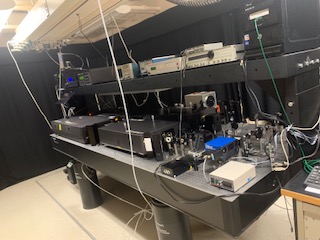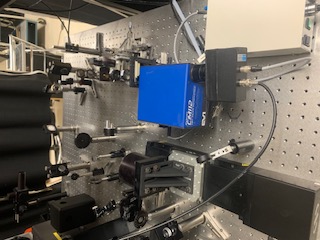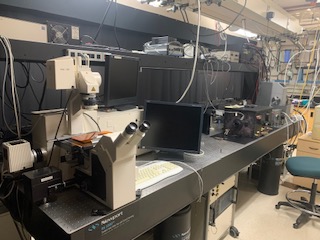Ultrafast Laser Laboratory
About the Laboratory
The Saskatchewan Structural Sciences Centre's Laser Technology Laboratory was built to conduct research using ultrashort pulses from Ti-doped sapphire lasers and laser amplifiers. These devices were invented in the early 1980s and since then these sources of high power short duration laser pulses have been applied for fundamental research in physics, chemistry, biology, and engineering. The short and powerful laser pulses are particularly useful for studying of compounds with very short fluorescence lifetimes. This type of laser pulses give rise to non-linear optical phenomenon in the samples under investigation, which in their turn allow to optimize the sample imaging, and give access to new contrast mechanisms for microscopy imaging. Disciplines from life sciences, chemistry, physics, and engineering make use of this lab to achieve their research goals.
Instruments and Techniques Used In Lab
For more detailed information, click here
For more detailed information, click here
For more detailed information, click here
For more detailed information, click here
For more detailed information, click here
Safety Information
Before coming into the lab, all users must complete “Laser Safety Awareness” course offered by the Radiation Safety Institute of Canada, found here. Upon arrival they must complete the Laboratory Specific Orientation with the research officer responsible for the Lab.
Training Information
For information regarding usage and training of the instruments in this lab, please contact the laboratory manager.





